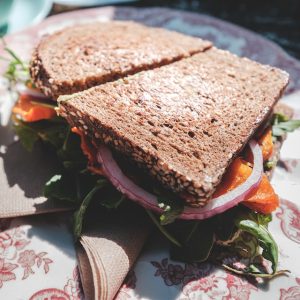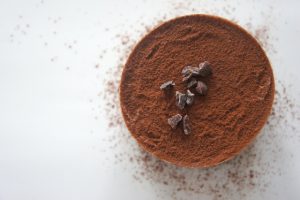There are different types of fibre that the body needs. All fibre will to some extent help feed the
good bacteria in the colon for a diverse and healthy microbiome (gut bacteria).
Fibre is not only important for regular bowl movements and digestive comfort, it also helps balance
blood sugar levels, keep cholesterol in check, help to make you feel fuller assisting in weight loss,
assists in post antibiotic damage and can indirectly influence mood.
Fibre is nondigestible carbohydrates and lignans in plant foods. Some foods cross over the different
categories and don’t just provide one type of fibre.
Insoluble Fibre (includes cellulose, some hemicellulose and lignans)
Insoluble fibre is good to help bulk up stools as it holds water and helps to reduce the pressure in the
colon. Also plays a role in promoting helpful bacteria in the microbiome.
Foods include:
- Wheat bran, bran cereals and whole grains (wheat and barley)
- Legumes including peanuts and peas
- Corn and popcorn
- Fruits – apples, pears, berries, bananas and peaches
- Cabbage family
- Spinach
- Sweet potato
- Sunflower seeds
Lignans are the only fibre that is not a carbohydrate. It’s a large molecule making up the woody part
of the plant. It contributes to the sandy texture of pears and lima beans. It is beneficial as it
combines with bile acids in the intestines to help prevent their reabsorption.
Soluble Fibre (includes pectins, beta glucans, some hemicellulose and gums)
Soluble fibre is also great for feeding the microbiome, but unlike insoluble fibre it plays more of a
role in slowing gastric emptying, binding cholesterol and bile acids, slows the absorption of glucose
so helps prevent a rapid rise in blood glucose levels.
Foods include:
- Grains such as oats and oat bran, barley, whole rye

- Fruits – apples, citrus, pears
- Broccoli
- Brussel sprouts
- Carrots
- Sweet potato and white potato
- Legumes including peas
- Gums used as thickeners in processed foods
- Psyllium
Fibre isolated from plants or commercially produced and added to processed foods are listed on the
ingredients list as their isolated form eg “pectin” will be included on a label rather than “apple”.
Prebiotics
These indigestible fibres are mostly used by the body to help feed the microbiome.
The main prebiotic foods include:
- Onions, garlic, leek
- Asparagus
- Green peas
Every root vegetable is a prebiotic. Including at least 1 per day will be a good way to increase your
prebiotic intake s eg sweet potato, white potato, carrots
Fruits that contain good prebiotics include:
- Nectarines
- Peaches
- Apples
- Bananas
Prebiotic legumes include:
- Chick peas and baked beans
Prebiotic wholegrains are:
- Oats
- Rye

Miscellaneous prebiotics and my 2 favourites:
- Flaxseeds
- Cacao!! Yes!! Raw cacao
Resistant starch
This is a type of fibre that doesn’t get digested in the small intestine and ferments in the large
intestine helping to feed your microbiome.
The foods that contain resistant starch:
- Green bananas and green banana flour. Resistant starch is lost when baked, so don’t bake with
starches like green banana flour, cassava or potato flour, but sprinkle small amounts on your
food if you want the prebiotic benefit or use in smoothies - Cooked and cooled rice and potato
- Beans, peas and lentils – white beans and lentils are higher in resistant starch
- Overnight oats (oats soaked overnight and not cooked – cooking oats removes the resistant
starch)
The supplemental prebiotics on the market include:
- Acacia fibre
- Partially hydrolysed guar gum (PHGG)
- Inulin
- Galacto-Oligosaccharides (GOS)
- Kfibre
- Psyllium – the most well known
KFibre is the newest addition its made from cane sugar – it is washed of the sugar and what is left is a
fibre that is dried and ground into a powder.
What makes this stand out?
- Both soluble and insoluble fibres
- Contains phytonutrients
- Anti-inflammatory properties
- Absorbs water as it moves through the digestive tract picking up waste and keeping bowels healthy
- Some fibres can contribute to bloating, but KFibre taken daily can reduce bloating
- Can relieve indigestion and heartburn
If increasing dietary fibre in your diet or adding in supplemental fibres, the key is to start slowly
and build up. Don’t go too fast or you can experience digestive issues such as gas, bloating,
tummy pain, diarrhoea and/or constipation. Also make sure you increase the amount of water
you are drinking when you increase your fibre intake.
 If you are having gut issues such as constipation, diarrhoea, bloating, gas/wind, pain while you eat or just after you eat or any other gut symptoms- Contact Megan Crockart to book in an appointment.
If you are having gut issues such as constipation, diarrhoea, bloating, gas/wind, pain while you eat or just after you eat or any other gut symptoms- Contact Megan Crockart to book in an appointment.
megan@balancingnutrition.com.au or 0417 679 287.
References available upon request.
